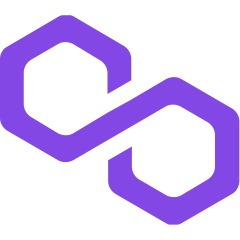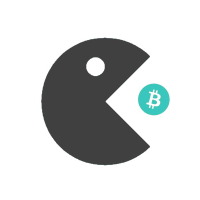Polygon (Matic)
What is Polygon?
Polygon (MATIC) is all about making Ethereum more efficient: an important fact for you, because if Ethereum does well, then so does Polygon (in theory). This coin is riding on Ether´s coat tails if you like.

MATIC is a token on the Ethereum network (remember that Ethereum hosts many more tokens in addition to its native Ether token. Read our “What is Unswap?” article for another example).
It powers the Polygon Network, a multichain scaling system for Ethereum. Polygon provides faster and cheaper transactions on Ethereum using Layer 2 sidechains, which are blockchains that run in parallel to the Ethereum main chain.
Ethereum Turbo
Ethereum has been a huge success, but it has run into some big challenges, many of which are being addressed with Ethereum 2.0. It’s the most widely used ecosystem for DeFi and the most secure smart-contract powered blockchain if we are talking miner and node activity.
BUT, it doesn’t link well with other blockchains and it has been hampered by congestion as a result of high traffic on the network. Using the Ethereum network during peak times can be disappointing at best: transaction fees have hit unacceptable levels for many, with some transactions hitting $100 in 2021.
This is down to the limit on the number of transactions that Ethereum can handle at the same time. Also, Ethereum achieves consensus on transactions through a proof-of-work (PoW) system which can be slow (something that is also being addressed with Ethereum 2.0).
Users can either increase the amount of Gas they pay to speed things up and ensure that their transaction is on the priority list with miners, or they wait until there is less traffic.
Providing the Tools to Scale On Ethereum
Polygon aims to ease that situation with its framework for constructing Ethereum blockchains that work well together. All of those complaints that you see about high Gas fees, low transaction speeds and so on are in the sights of this project.
The platform is building an “Ethereum Internet of blockchains” — a multi-chain ecosystem of Ethereum-compatible networks. It makes it easy for developers to each launch their own custom Ethereum-compatible blockchain that will work well within the whole.
It began life as the Matic network: a layer-2 scaling solution for Ethereum. The project was rebranded to Polygon when the project´s scope was increased to developing the tools to build a network of scaling, collaborative yet independent blockchains. MATIC remain the name of the native token that you can trade on most exchanges.
Who is Behind Polygon?
Polygon is being built by four co-founders — Jaynti Kanani, Sandeep Nailwal, Anurag Arjun, and Mihailo Bjelic. Kanani is the CEO: a developer with extensive experience in scaling projects.
How Does Polygon Work?
Polygon offers a pick ´n mix set of modules that developers can use to build their own blockchain. Blockchains launched on Polygon get all the benefits of the Matic proof-of-stake (PoS) sidechain, which is fast and low cost, while synchronising with the Ethereum mainchain.
The native token of Polygon remains MATIC. This is used for paying gas fees and participating in governance of the project (kind of like voting rights), and can be used throughout the Polygon DeFi world
What Makes Polygon (MATIC) so Interesting?
Polygon builds on the vision of the original Matic Network project by supplying developers with a tool box that they need to create fast, scaleable blockchains and DApps. It´s like a “Turbo Boost” for Ethereum, if you like.
It’s the only solution that works alongside the Ethereum Virtual Machine (EVM) while allowing chains to keep their independence, and with all the channels needed to communicate and transact with one another.
Coding on Polygon is very similar to coding on Ethereum, so the platform has enjoyed fast adoption from within the community.
Summary
So that is Polygon (MATIC) in a nutshell. It is closely linked to the success of Ethereum, and you can think of it as a Turbo Boost for the no 2. crypto asset. One of the reasons it is so successful is that it is providing the tools for developers to fast track and scale their products. You remember who made the money in the Gold Rush? The people supplying the pick axes, right? Well, MATIC is the pick-axe for Ethereum.
